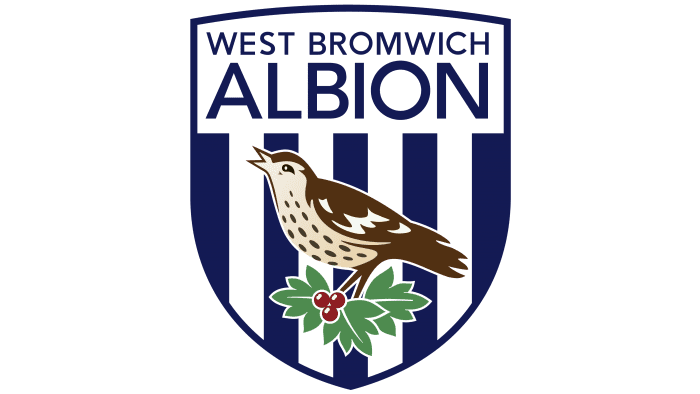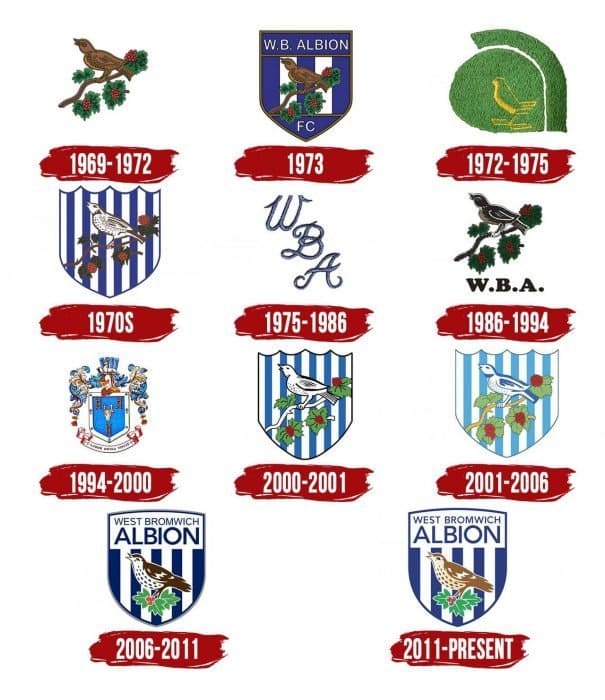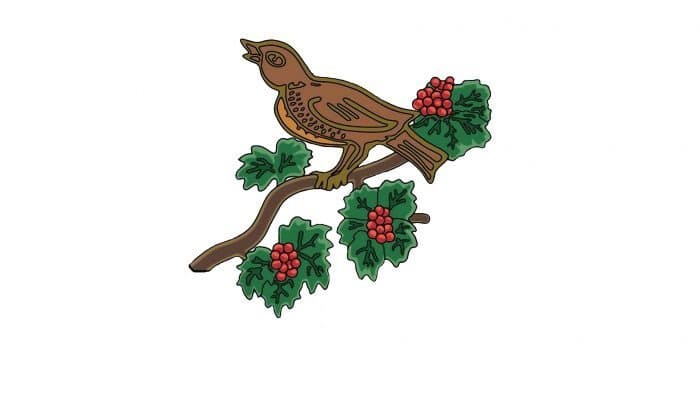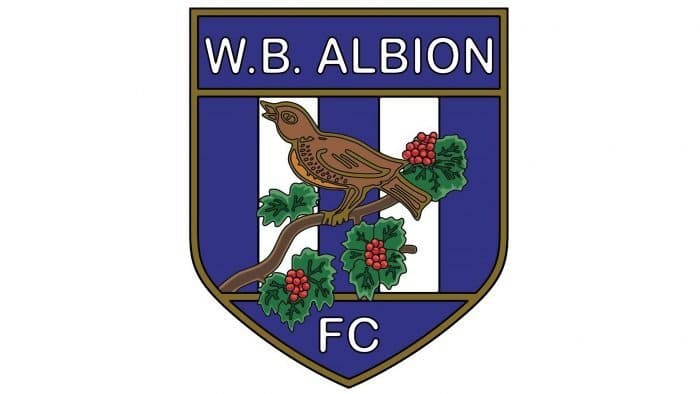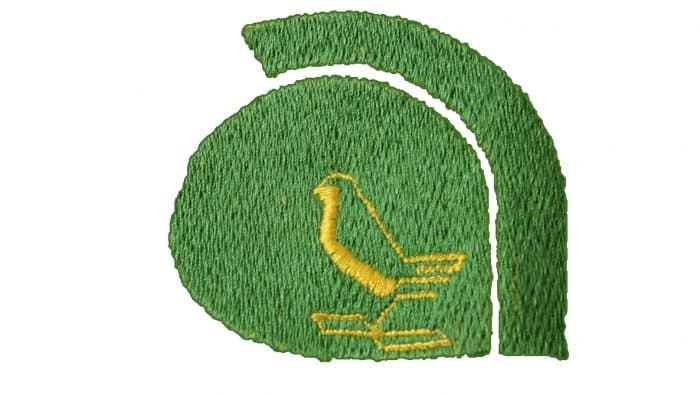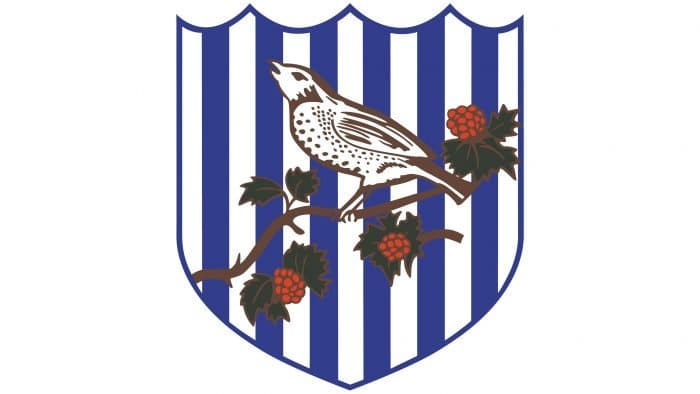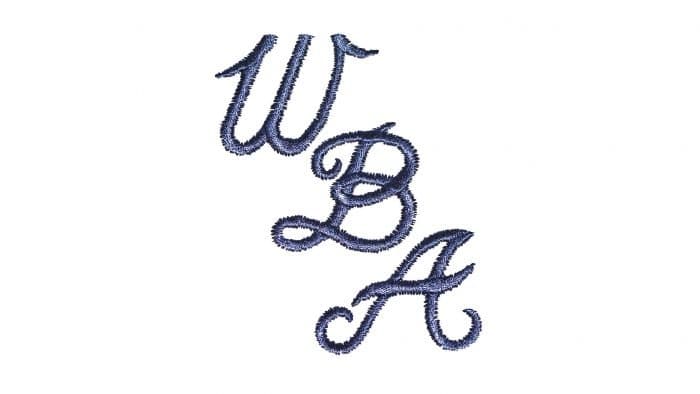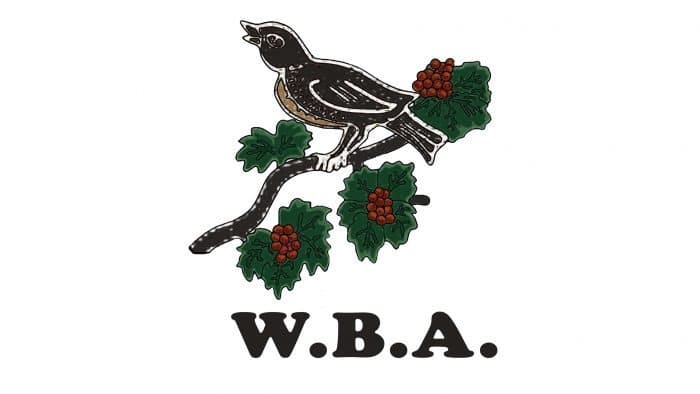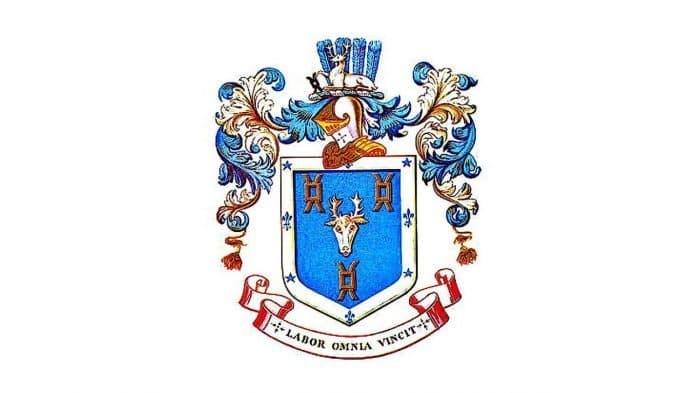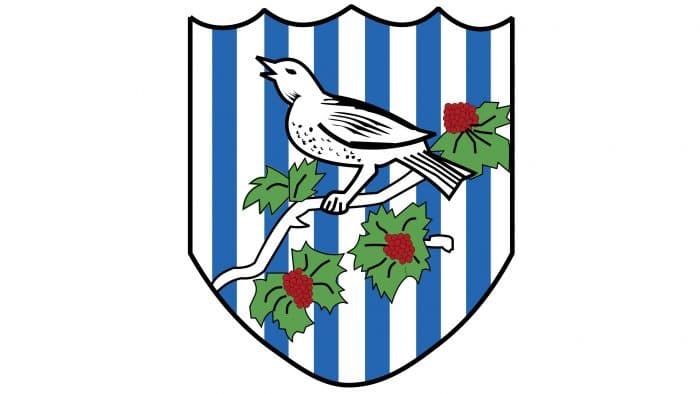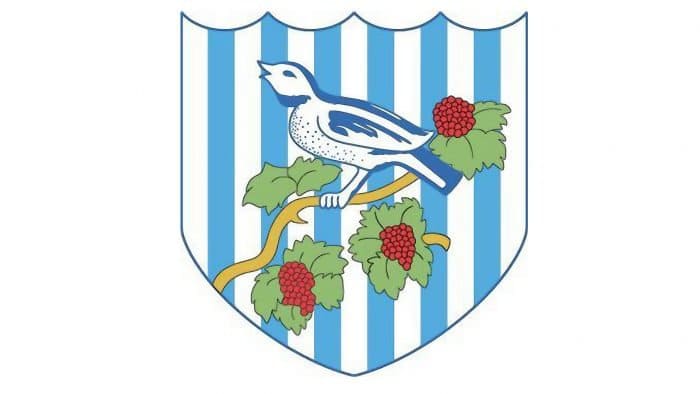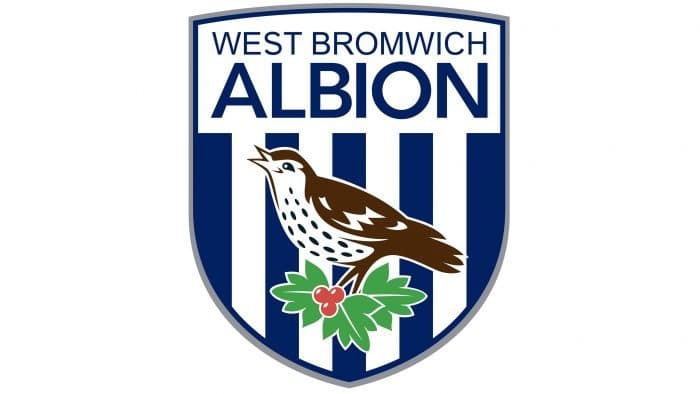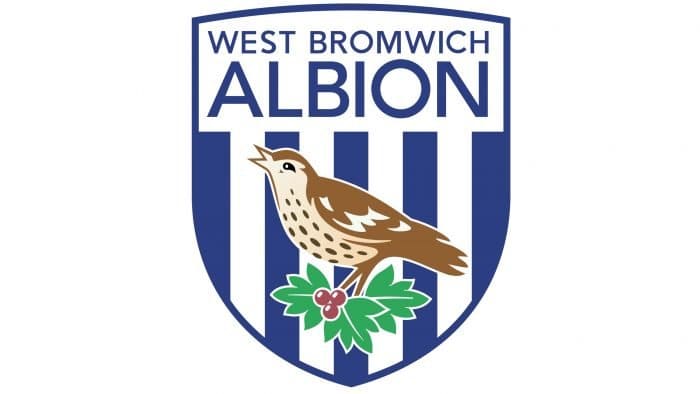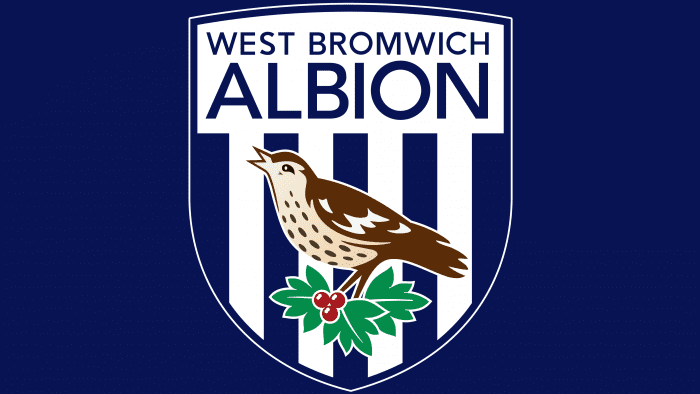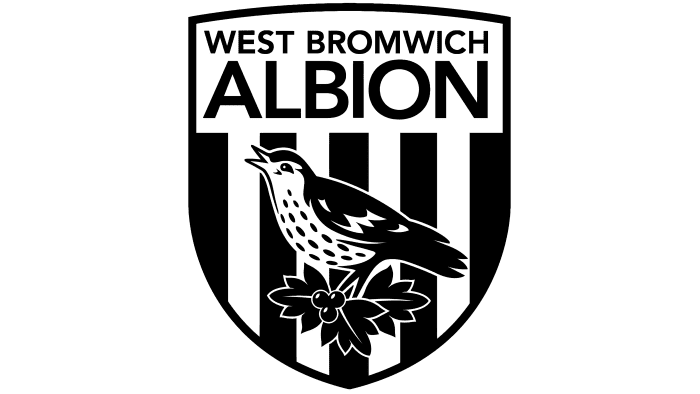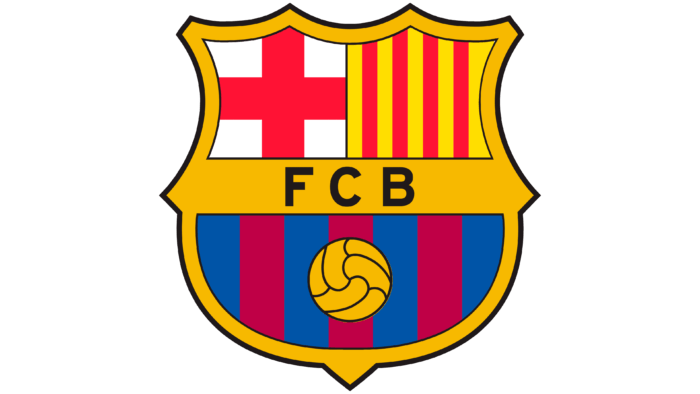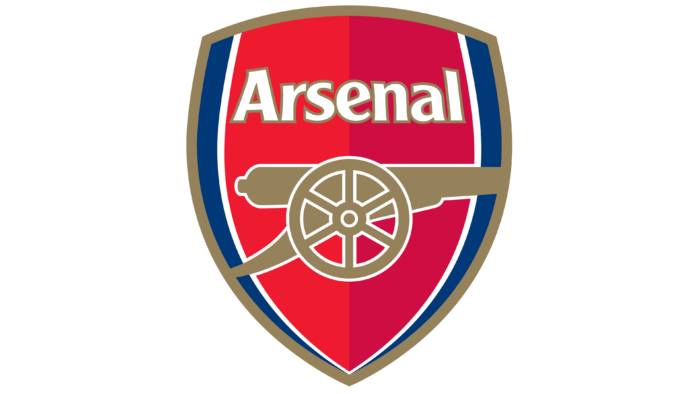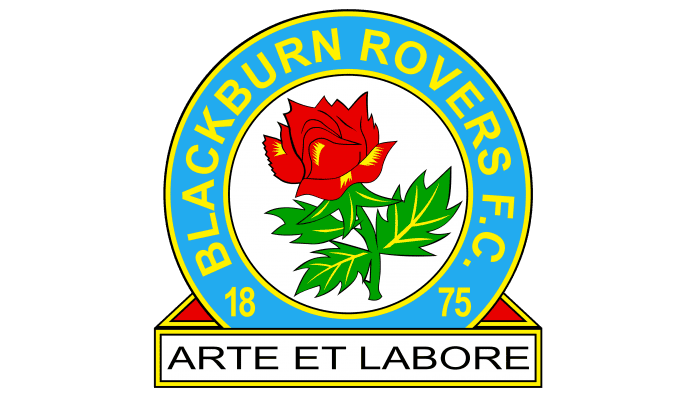The symbol of a bird is often found in the emblems of sports clubs. The “West Bromwich” logo is no exception. The image of a thrush on a hawthorn branch – the mascot, the colors of the official uniform, and the full name of the club became the primary elements of the visual graphics.
West Bromwich: Brand overview
| Founded: | 1878 |
| Founder: | Lai Guochuan |
| Headquarters: | West Bromwich, West Midlands, England |
| Website: | wba.co.uk |
The club was created by workers of Salter’s Spring Works in West Bromwich in 1878. Initially, the team was called West Bromwich Strollers, and today’s name, West Bromwich Albion, has existed since 1880. Albion is an area in West Bromwich where the team members lived or worked.
In 1885, the team gained professional status. Then, in the 1880s, the “Throstles” reached the final of the FA Cup four times, and after the first three unsuccessful attempts, the trophy was finally brought back in 1888. That same year, the team became one of the twelve founders of the Football League. In 1901, it moved to the Hawthorns stadium.
The nickname “Throstle” is considered official because there is an image of a thrush on the club’s emblem. Initially, the bird was depicted sitting on the crossbar of a goal, but now, instead of a crossbar, the “West Bromwich” emblem depicts a hawthorn branch, hence the other nickname – “The Hawthorns.”
Football fans often called the “West Bromwich” players Baggies. According to history, its appearance dates back to the late 19th and early 20th centuries when the main supporters of the club were workers from the nearby West Brom enterprise – Salter’s Spring Works. They went to games of their favorite team in baggy trousers, and fans of rival teams began calling the players Baggies. According to another version, leather bags were used to collect money for tickets, which led to the nickname. There’s also a third theory that the nickname arose because the players played in baggy shorts.
Meaning and History
Throughout the club’s existence, two logos can be highlighted: the first included an image of a thrush bird perched on a crossbar, the second was more modern, also including the name of the club West Bromwich Albion, and the hawthorn branch, replaced the crossbar. The thrush was a constant symbol throughout the club’s history. But why did the designers depict this particular bird? If you have a songbird on your coat of arms, please come up with a beautiful legend about how the animal appeared on the “West Bromwich” emblem. At WBA, children are told that the thrush often sits on the crossbar of the goal. That’s why it was depicted until the thicket was replaced with hawthorn leaves. It’s known that these birds prefer to nest in Crataegus bushes, which grew on the future stadium site. Adults know another version: in the early 20th century, footballers often visited a brothel where the girls kept a thrush in a cage. That’s how the symbol was chosen. In the 1930s, birds were kept at the stadium, and, according to legend, the beautiful singing of the bird meant the team was expected to win.
But the “West Bromwich” emblem wasn’t always adorned with a thrush. From 1994 to 2000, the football shirts of the players featured the coat of arms of West Bromwich Town instead of the club’s emblem. There was no thrush. From 1975 to 1986, the players’ shirts featured a simple white inscription in capital letters of the full name of the club – WBA, which in those years was considered the emblem of “West Bromwich Albion.”
Today, the “West Bromwich Albion” emblem is still the same songbird, sitting on a hawthorn branch, enclosed in a shield shape. In the top part of the shield, the full name of the club in blue color on a white background is located, and the second part of the shield is made in blue and white stripes, indicating the color and design of the football players’ uniforms.
Most of the “West Bromwich Albion” logos feature a thrush. According to legend, this bird often flew onto the football field during matches. According to another version, it was kept in a brothel that the footballers visited.
What is West Bromwich?
“West Bromwich Albion” is a successful participant in the EFL championship, nicknamed “Throstles” because of its old emblem with a bird image. The owner and chairman of the board of directors is Chinese businessman Lai Guochuan. The football club has existed since 1878.
1969 – 1972
The central image of the 1969 emblem is the song Thrush. Using it as a club badge was first suggested by secretary Tom Smith. Initially (in the 1880s), the bird sat on the crossbar of the goal. In 1900, it was “relocated” to a hawthorn branch. This plant was chosen for a reason: it symbolizes the Hawthorns stadium, where the team moved at the beginning of the new century.
1973
Designers placed the thrush and branch inside a heraldic shield. The background is adorned with vertical stripes – three blue and two white. This refers to the players’ uniforms. Above the club name, “W.B. Albion” is written.
1972 – 1975
The 1972 emblem depicts a yellow outline of the bird. The light green background resembles the lowercase letter “a.”
1970s
Another variation of the striped shield. The background pattern consists of 6 blue and seven white lines. In the center, a white bird is depicted sitting on a long branch with leaves and berries.
1975 – 1986
In 1975, a simplified logo consisting of the team’s initials was introduced. The blue letters W.B.A. are embroidered on a white background. The font imitates calligraphic handwriting with curls.
1986 – 1994
The club restored the 1969 emblem, changing only the color scheme. The leaves became dark green. Black thrushes and branches – black, with white outlines. Below is the inscription “W.B.A.” – the abbreviated full name of the club.
1994 – 2000
At the end of the 1990s, the players’ uniforms were adorned with the coat of arms of the West Bromwich district council. It features a deer, a knight’s helmet, feathers, and a scroll with the motto “Labor omnia vincit” (“Labor conquers all”).
2000 – 2001
The logo with the shield and thrush returned, as in the 1970s. The bird is again sitting on a hawthorn branch but on a white and light blue background. All elements in the logo are outlined in black.
2001 – 2006
Another variation of the 1970s emblem. The shield is surrounded by a light blue border. The thrush is white, with blue outlines.
2006 – 2011
In 2006, “West Bromwich Albion” changed the design of the club badge. For the first time, the team’s full name appeared on the emblem. The leaves and berries replaced the hawthorn branch. The bird looks more realistic thanks to modern graphics and accurate color reproduction. The shield is placed in a silver frame.
2011 – today
In the latest version of the logo, the blue and brown colors became darker by several shades. The silver frame around the shield on the logo disappeared.
West Bromwich: Interesting Facts
West Bromwich Albion Football Club, or West Brom for short, is a really old soccer team in England that’s been around since 1878.
- How It Started: Workers started the team in 1878. It shows how soccer and work life mixed back then.
- Early Wins: They won their first big trophy, the FA Cup, in 1888, just a little while after helping start the Football League.
- Nicknames: People call them “The Baggies,” maybe because of the big pants workers used to wear or the bags fans carried. They’re also known as “The Throstles” because of a bird on their logo.
- Their Home: They’ve played at The Hawthorns since 1900. It’s the highest soccer field above sea level in England.
- Biggest Achievement: They won the top league in 1920, the highest they’ve ever finished.
- FA Cup Wins: They’ve won five times, showing they’ve been pretty successful.
- Record Win: Their biggest win in a league game was 12-0 against Darwen in 1892.
- In Europe: They’ve played in European tournaments and even reached the quarter-finals of the UEFA Cup in the 1978-1979 season.
- Ups and Downs: They’ve moved up and down between the top two leagues, earning them the playful nickname “boing boing.”
- Helping Out: The West Bromwich Albion Foundation does many good things in the area, like health, education, and sports projects.
West Brom’s long history shows how they’ve endured good and bad times, making them special to their fans and an important part of soccer in England.
Font and Colors
The “West Bromwich” trademark is oriented towards nature: it contains both plants and animals. In contrast, football symbolism is completely absent. The inscription with its name, located above the thrush, is the only indication of the logo’s affiliation with the club. On the other hand, designers adhered to heraldic traditions: they depicted a bird against the backdrop of a heraldic shield, a shape very popular among sports teams. Therefore, even though attention is focused on the thrush and hawthorn, the main requirements for the emblem design are also met.
The inscription “WEST BROMWICH ALBION” is broken into two parts. The first fragment – “WEST BROMWICH” – is located at the very top and is written in medium-sized symbols. The word “ALBION” is located slightly below. It is separated from the city’s name and highlighted with enlarged letters. The differences end there: in both cases, the Avenir Medium font is presented. Typographer Adrian Frutiger developed this geometric sans-serif.
The dominant colors of the logo are dark blue (#122F67) and white (#FFFFFF). They make up the base of the shield. They are complemented by red (#A41B22), green (#149557), and brown (#755031), which are used to denote berries, leaves, and the song thrush. The brown color is uneven – it has a gradient with several shades.
West Bromwich color codes
| Indigo | Hex color: | #122f67 |
|---|---|---|
| RGB: | 18 47 103 | |
| CMYK: | 83 54 0 60 | |
| Pantone: | PMS 294 C |
| Coffee | Hex color: | #755031 |
|---|---|---|
| RGB: | 117 80 49 | |
| CMYK: | 0 32 58 54 | |
| Pantone: | PMS 7567 C |
| Spanish Green | Hex color: | #149557 |
|---|---|---|
| RGB: | 20 149 87 | |
| CMYK: | 87 0 42 42 | |
| Pantone: | PMS 3405 C |
| Upsdell Red | Hex color: | #a41b22 |
|---|---|---|
| RGB: | 164 27 34 | |
| CMYK: | 0 84 79 36 | |
| Pantone: | PMS 711 C |
